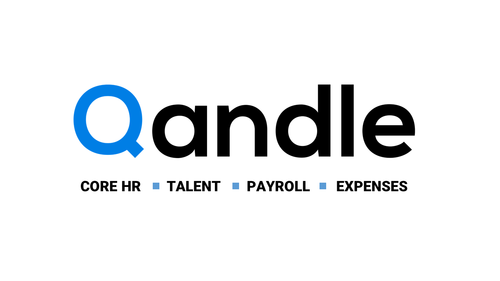The use of Excel for processing payroll began in an era when the alternatives were either too expensive (enterprise software), or too labor-intensive (manually, using pen and paper). The world has moved on since. Today, it is safe to say that Excel is among the most inconvenient and error-prone tools for payroll management. However, several businesses continue to use this age-old tool for the job. Their decision to opt for the application usually rests on some faulty assumptions.
Here’s the myth-busting truth of it all.

Assumption: “Excel is popular. Everyone is knowledgeable about it.”
Reality: Processing payroll in Excel takes someone skilled. With all the formulae, VLOOKUPs, etc. it takes someone knowledgeable and highly trained in the functionalities and shortcomings of spreadsheets to wield the tool well. Even if the personnel is well-trained, is it worth the time and effort spent on manual, and often redundant, work? According to research, 60% of companies that use Excel take seven or more days to process payroll.
Assumption: “Excel is easy to use and meets my requirements.”
Reality: This one’s our absolute favorite! Organizations grow over time. Employee count increases and statutory compliance vary from region to region. A changing headcount and an evolving legal environment make payroll processing more complex, time-consuming, and cumbersome.
Assumption: “Excel gives me the required results.”
Reality: Payroll executives across the board struggle with the software, which throws up sheet upon sheet of formula and rules. A single wrong click and days of effort can go for a toss. Accuracy takes a hit and penalties can get slapped on the company. In short, what results is utter confusion.
Other common issues
- Financial implications: Companies may be subject to penalties and financial losses due to errors and faulty calculations in spreadsheets. A simple error can cost the company millions sometimes. A case in point is a Canadian power generation company which lost no less than 24 million on account of a spreadsheet error. SMEs, quite simply, can not risk these kinds of errors.
- People dependency: According to Forbes, payroll fraud happens in 27% of all businesses and occurs nearly twice as often (14.2%) in small organizations with less than 100 employees. Using payroll software in Excel means trusting individuals, i.e. payroll executives, with critical information. It’s not difficult to understand why a terminated/exiting employee would choose to leave with payroll-related information in hand or, worse, with the passcode to access critical information. This factor takes on even more relevance given the high employee turnover that’s typically seen in the domain. For this reason, it is important to store payroll information in a secure online location with regular back-ups made.
- Generation and distribution of payslips: A receipt of sorts which states the salary credited to an employee, a payslip can not be generated unless numerous deductions, additions, and other implied costs are borne in mind. In addition to this, the payslip structure varies between companies. Components such as HRA, PF, and medical insurance must all be factored in before accurate payslips can be generated and rolled out to employees. This means a heavy investment in terms of time and energy and also increasing (even unmanageable) complexity as the organization grows.
- Errors aplenty: According to research by The Wall Street Journal, a whopping 88% of spreadsheets contain errors. The most common ones are data errors such as copy-paste, formulae, format, etc. that arise all the time in Excel, yet go unnoticed.
Bottom Line
In spite of our warnings, you may still prefer to continue using Excel for your payroll management needs. If you do, we strongly recommend that you follow these best practices,
- Ensure your spreadsheet is from a reliable source
- Check for accuracy and statutory compliance
- Keep your spreadsheets up-to-date
- Backup your data regularly
Besides, here are the two best payroll software in Excel that you can consider using.
-
Free Payroll Software by Excelhub
It goes by the same name as payroll software. Using this software, you can easily update employee details, process salaries, calculate tax, and more. The best part is that after processing the salary, you can immediately generate reports like payslip for every month. You can, in fact, create bulk PDF of payslips.
What’s more, you can print the income tax computation for the full year. The tax is computed based on projected income for the entire year with the details in the tax master section.
This payroll software in Excel for small business offers more such functionalities to ease up your process.
-
Payroll Processing Excel Utility
It is another free payroll management software that helps you manage and process your employees’ salaries. It is best suited for small- to- medium-sized enterprises as it restricts the employee number to 100.
Payroll Processing Excel Utility offers a whole range of features that include tax management, salary management, employee management, and more. Moreover, it is quite easy to install and use. But for those ready for an alternative, we bring you an easier, faster, and highly economical solution on the cloud, with automated payroll management and other seamlessly integrated features. For more information, visit www.greythr.com.
SoftwareSuggest empowers businesses to discover top business software and service partners. Our software experts list, review, compare and offer a free consultation to help businesses find the right software and service solutions as per their requirement. We have helped 500,000+ businesses get the right software and services globally. Get a free consultation today!


![Top 10 Free/Open Source Payroll Software [Edition 2020]](https://www.softwaresuggest.com/blog/wp-content/uploads/2020/05/Top-FreeOpen-Source-Payroll-Software-1024x409.jpg)

